2021 OLD TOWN SQUARE EXECUTION by the Czech Mint
One thing the coin producers in Eastern Europe do very well showcase their history. Much of it is largely unknown in the West, but it’s a rich, deep and often tragic one that is filled with themes and events ripe for numismatic attention. One such event happened 400 years ago in the capital of what is now the Czech Republic, Prague.
Starting early on a June morning in 1621, 27 Czech Lords, Knights and Burghers were executed after taking part in a failed uprising against the Habsburg Emperor Ferdinand II. It was part of the famed Thirty Years War, a conflict of unprecedented brutality than may have led to parts of Germany suffering a 60% population death rate and over 4.5 m people getting killed overall.
Known as the Old Town Square Execution, facets of the event are covered on four quarter-ounce fine gold coins, each struck to a proof finish. The choice of subjects is pretty clever, including the location of the execution, the executioner, the executed, and the antagonist. The art style isn’t overly complex, which seems to suit the medieval topic extremely well and it all makes a neat, coherent set.
Also available, although only in a completed four-coin form, is a 2oz silver set. Also struck to a proof finish, each coin is considerably bigger than the gold versions and the presentation box does a good job of showing them off. There’s only 500 produced, however. Altogether, either format makes a great little set that highlights a historic event from centuries ago. Something that numismatics does very well.
The hangmen were outsiders of society – despised but necessary. The Prague hangman and founder of the famous executioner dynasty Jan Mydlář was not different. The purpose of his craft was not just decapitating or hanging the convicts. He was also adept at the various forms of torture that flourished in the 17th century.
The hangman Mydlář did not distinguish whether the culprit was simple or noble. However, he was not a monster without emotion and intelligence. As the son of a respected scribe from Chrudim, he studied medicine at Charles University and came voluntarily to bloody profession that was normally hereditary – thanks to an unhappy love for a woman sentenced to death. However, he did not save her from the execution in the end.
For all the cruelty that has surrounded him ever since, he relied on humanity, understanding, and love. The Old Town execution became a great test for him, which was a disgraceful example of Habsburg intolerance and in which, by coincidence of unfortunate circumstances, he had to torture and kill his good friend… Jan Mydlář became respected gradually. He was no longer seen as a devil’s boy, but as a man of soul and reason. He enjoyed a respect that even many nobles did not know, and he became a favorite of Rudolf II.
An execution scaffolding began to be built directly in front of the Old Town Hall as early as June 18, 1621. It was twenty paces long and wide, made of wood and covered with a black cloth. The convicts were brought to the town hall, where they spent their last night, on the evening of June 20, and thousands of curious people filled the Old Town Square early in the morning of June 21. The city gates were closed due to fear of unrest and the square was occupied by the imperial army led by Albrecht of Wallenstein, but the atmosphere was surprisingly peaceful.
A shot from a cannon at Prague Castle announced the beginning of the execution at five o’clock in the morning. Individual convicts inside the town hall were gradually called to the podium. The executions lasted four hours, and loud drumming ensured that the people did not hear what the Czech lords were saying before they died. Most of them were executed on a block of wood, two were hung on a beam pulled out of the town hall, and one was hung on a gallows that was built on the podium.
The gravediggers wrapped the headless bodies in cloth, carried them down under the scaffolding, and brought them to their resting place. However, the heads were displayed in public – as a warning to anyone who would dare to resist the Habsburgs. The Old Town Execution Ground was dismantled after the execution and the beams used were donated to Church of Sts. Simon and Jude on U Milosrdných Street in the Old Town of Prague. Today, the place where the Bohemian Revolt ended tragically is marked by white paving stones…
While King Friedrich of Palatinate fled to Holland after losing the Battle of White Mountain, most of the leaders of the defeated estate uprising remained in the Czech lands in the hope that the emperor’s retribution for their betrayal would be modest. Unfortunately, they were wrong and their absolute punishment went down in history as an Old Town execution. This cruel spectacle is also known as the execution of 27 Czech lords, but there were only a few convicted men among the convicts.
The executioner sent 3 convicted lords, 7 knights, and 17 burghers to the other world on June 21, 1621. They were Jáchym Ondřej Šlik, Václav Budovec from Budov, Kryštof Harant of Polžice and Bezdružice, Kašpar Kaplíř from Sulevice, Prokop Dvořecký from Olbramovice, Fridrich from Bílá, Jindřich Otta from Los, Diviš Černín from Chudenice, Vilém Konecchlumský from Konecchlumí, Bohuslav from Michalovice , Valentin Kochan from Prachová, Tobiáš Štefek from Koloděj, Ján Jesenský, Kryštof Kober from Koberšperk, Jan Šultys from Felsdorf, Maxmilián Hošťálek from Javořice, Jan Kutnauer from Sonnenštejn, Simeon Sušický from Sonnenštejn, Nathanael Vodňanský from Uračov, Václav Maštice Kozel from Peclinovec, Ondřej Kocour from Votín, Jiří Řečický, Michal Witmann, Simeon Vokáč from Chyš, Leander Rüppel from Ruppach and Jiří Hauenšild from Fürstenfeld.
The order of executions was determined by professional dignity. Most of the convicts were beheaded, three were hanged. The cruelest fate befell the famous doctor Ján Jesenský, whose tongue was cut out before execution. Supporters of the executed and their opponents agreed that all the gentleman facing death behaved with dignity. Most of them were mature men. Spiritual comfort was given to them by the priests, who then interpreted the last words to the watching crowd. During the execution, however, they played the trumpets and drums so loud that the people would not hear them. Even after their death, the executed ones were restless. Their remains were disfigured – quartered, woven into a wheel, bumped into stakes and exposed to the public as a warning…
The pre-White Mountain period was kind to our people. The Czech estates had considerable political power. The Czech language developed comfortably, while the publication of the first complete translation of the Bible into Czech became the greatest achievement. In the kingdom there was a religious tolerance confirmed by the majesty of the Rudolf´s majesty.
However, all this was in conflict with the Habsburg efforts to strengthen royal power and the Catholic faith, which resulted in the Bohemian Revolt. In the end, the rebellion failed. Moreover, it unleashed a European conflict of unimaginable proportions – the Thirty Years’ War. The builders of the uprising were severely punished by the Habsburgs, but the Old Town execution was just the beginning. The Czech nation has since been plagued by one tragedy after another. There was a severe recatholicization in the country, which caused a mass exodus of Czech Protestants. Half a million Czechs, which means almost a quarter of the population, including world-famous personalities such as the educator Jan Amos Komenský or the graphic artist Václav Hollar fled abroad from religious oppression.
There was an extensive confiscation of Czech estates. Emperor Ferdinand II. laid the foundations of absolutism. The centralism associated with it then led to the Germanization of the nation and the decline of Czech language. The burning of forbidden books also contributed to this – including the Czech Kralická Bible. The post-White Mountain Dark Age full of oppression and hopelessness lasted for a century and a half. The change did not come until the end of the 18th century, during the reign of the enlightened rulers, when the Czech National Revival began.
PRESENTATION OPTIONS
As well as the usual neat Czech Mint black boxes and themed slipcases(above), they also have a collection box on offer (below). This mint is one of the few that regularly does this kind of box and we think it’s something sorely missing from other producers. The box is wooden, holds all four coins, and comes with a gorgeous themed medieval style art card with a list of the victims on the back side. It sells, at the time of writing (08/2021), for €33.00.
01: Mgr. Petr Horák depicted Jan Mydlář holding the hangman’s sword on the reverse side of the coin. The composition is supplemented with other three swords, because the hangman blunted a total of four blades, a block of wood and a rope, as three of the convicts were hanged. The inscription presents. MASTER OF EXECUTION – HANGMAN JAN MYDLÁŘ and the date of execution on June 21, 1621.
02: The Old Town sidewalk with twenty-seven crosses can be found on the obverse side of the coin, which was processed by Mgr. Petr Horák. The reverse side then presents a detailed isometric view of the Old Town Hall with the astronomical clock and the execution stage. A rich inscription that surrounds the building presents STAROMĚSTSKÉ NÁMĚSTÍ – MÍSTO KRVAVÉ POPRAVY 27 ČESKÝCH PÁNŮ – 21. 6. 1621 (OLD TOWN SQUARE – A PLACE OF BLOOD EXECUTION 27 OF THE CZECH MEMBERS – June 21, 1621).
03 Mgr. Petr Horák depicted on the reverse side of the coin a detail of Jan Mydlář’s executioner ready to wave his sword. The rich inscription contains in several lines the names of some convicts who increase the impression of a whistling sword, as well as the text POPRAVA 27 ČESKÝCH PÁNŮ – 21. 6. 1621 (EXECUTION of 27 CZECH LORDS – June 21, 1621).
04: The work of the medal maker Mgr. Petr Horák, is dedicated to Ferdinand II. At the top you will find his portrait supplemented with a Habsburg eagle. At the bottom there is the scattered inscription RUDOLFŮV MAJESTÁT (RUDOLF´S MAJESTY). This document of Rudolf II., according to which no one was to be forced into the Catholic or other faith, was cut by Ferdinand II. The composition of the reverse side is closed by the inscription POBĚLOHORSKÁ PROTIREFORMACE.
SPECIFICATION
| OLD TOWN SQUARE EXECUTION |
||
| DENOMINATION | $10 NZD (Niue) | $5 NZD (Niue) |
| COMPOSITION | 0.9999 gold | 0.999 silver |
| WEIGHT | 7.78 grams | 62.2 grams x 4 |
| DIMENSIONS | 22.00 mm | 37.00 mm |
| FINISH | Proof | Proof |
| MODIFICATIONS | None | None |
| MINTAGE | 300 per design | 500 sets |
| BOX / C.O.A. | Yes / Yes | Yes / Yes |


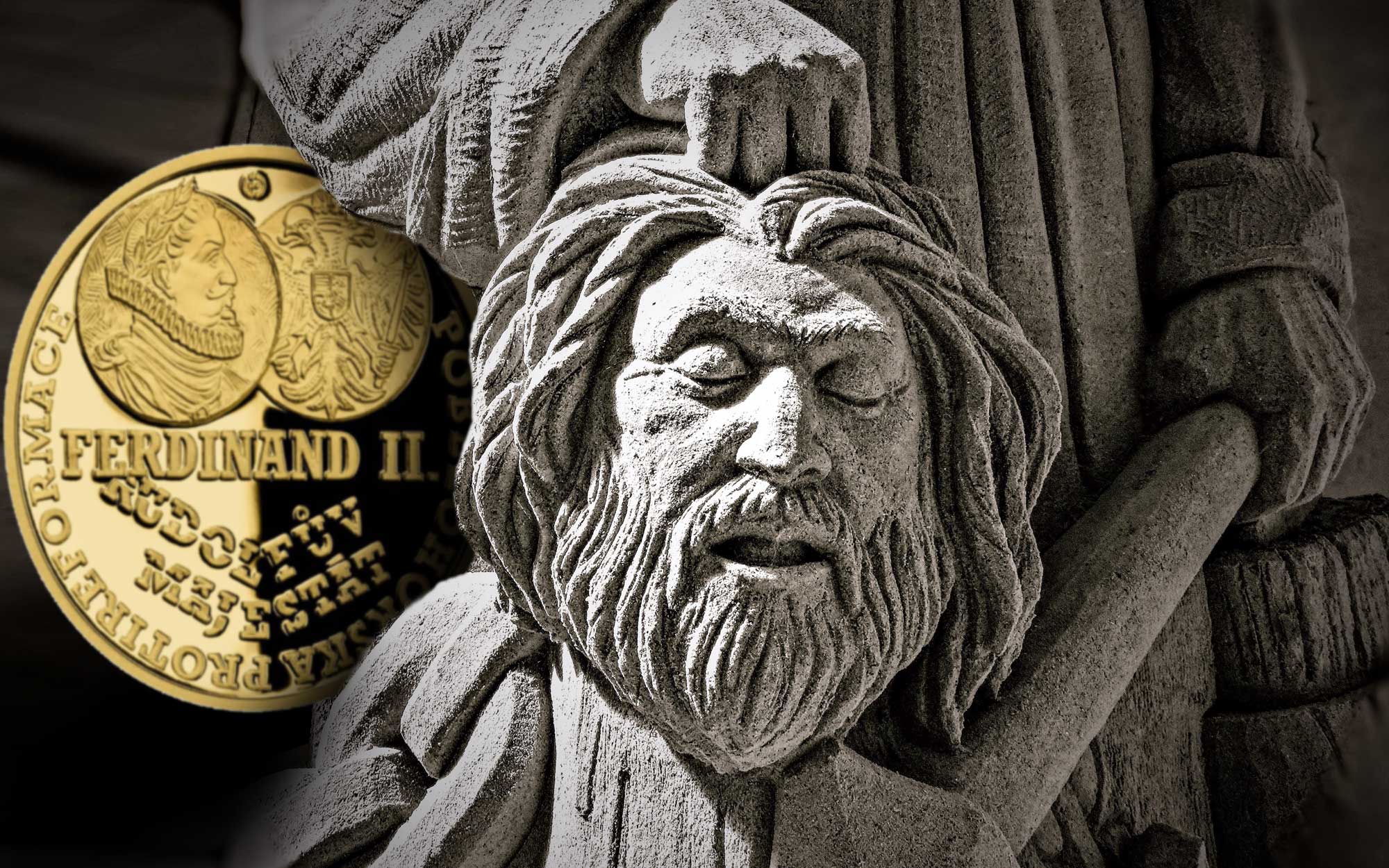



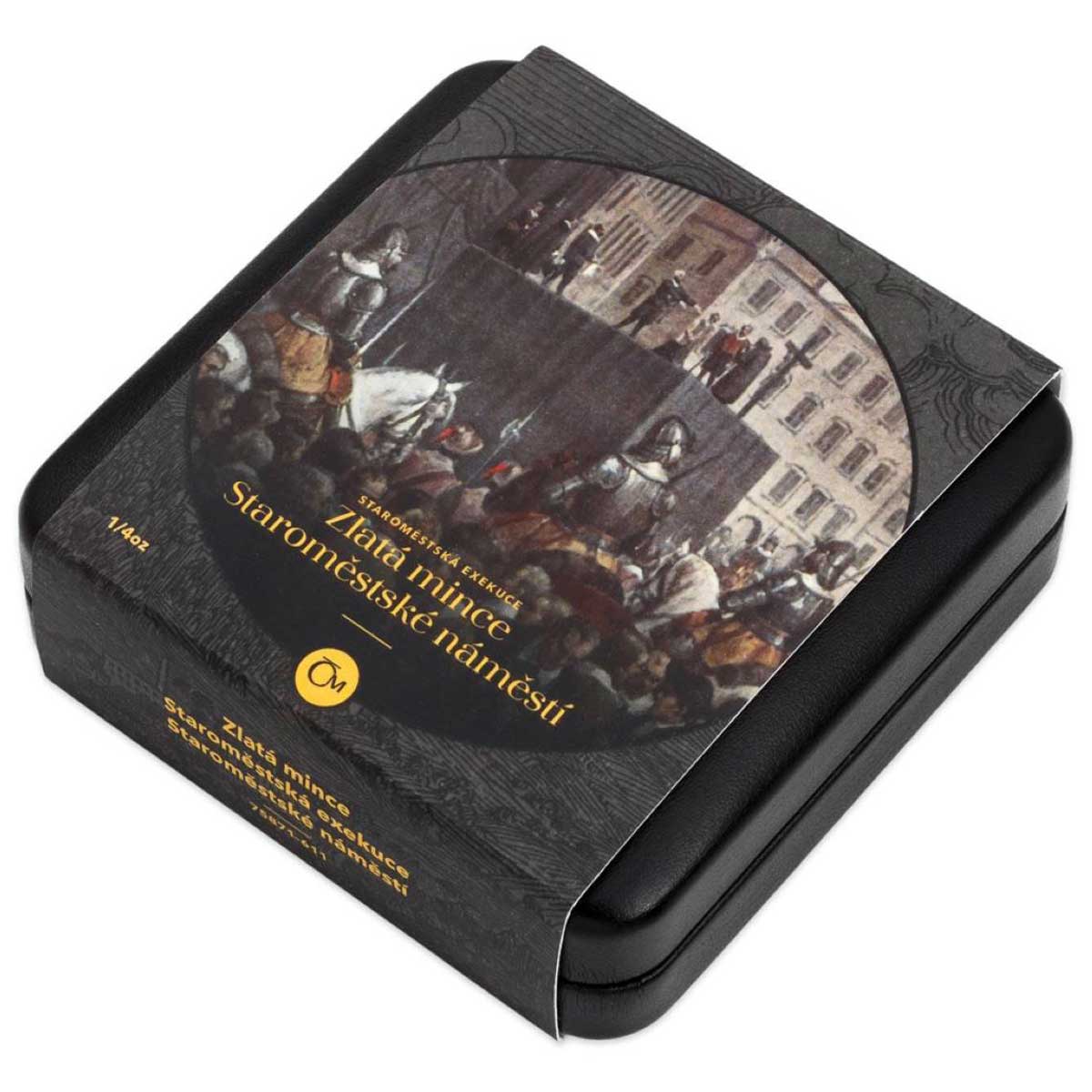
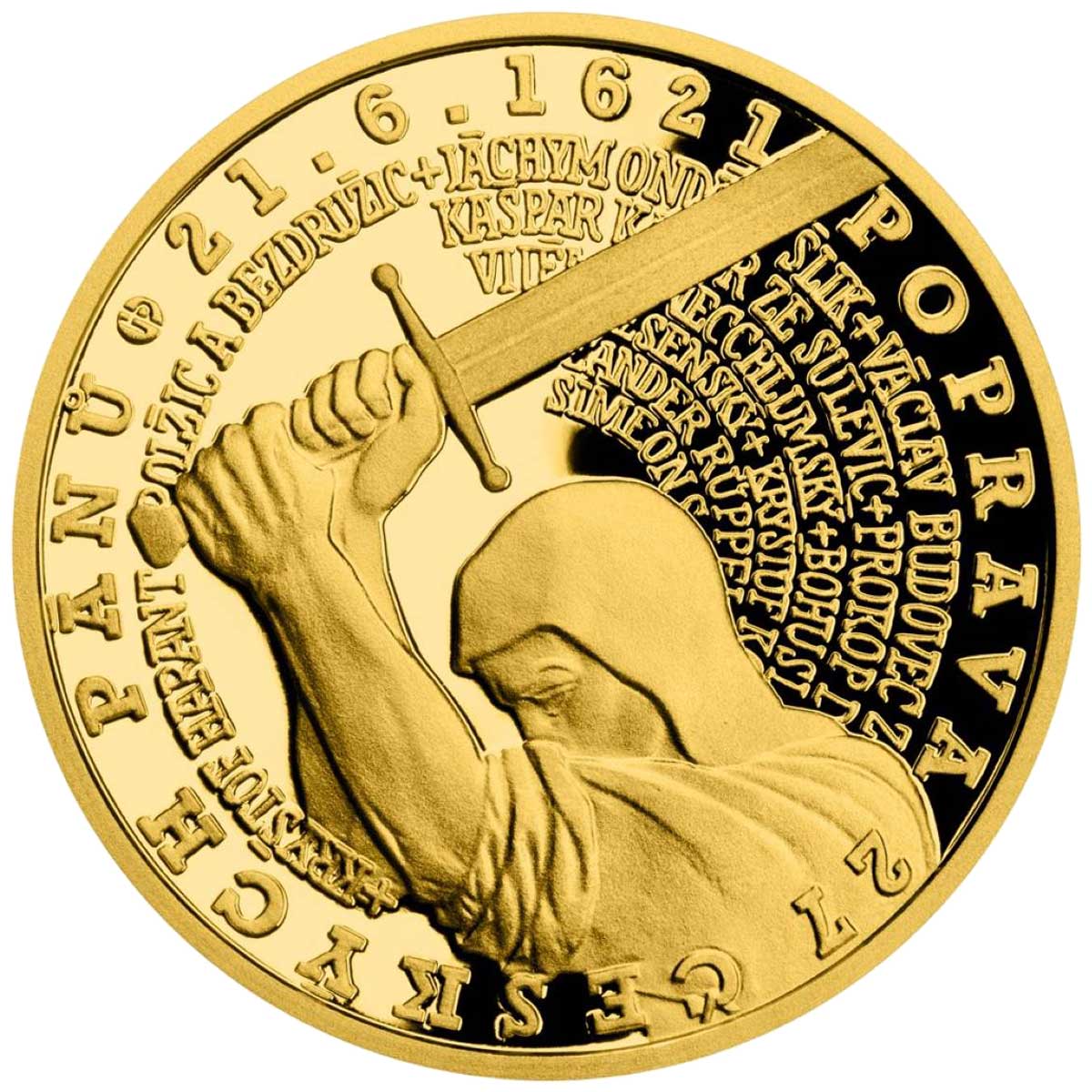



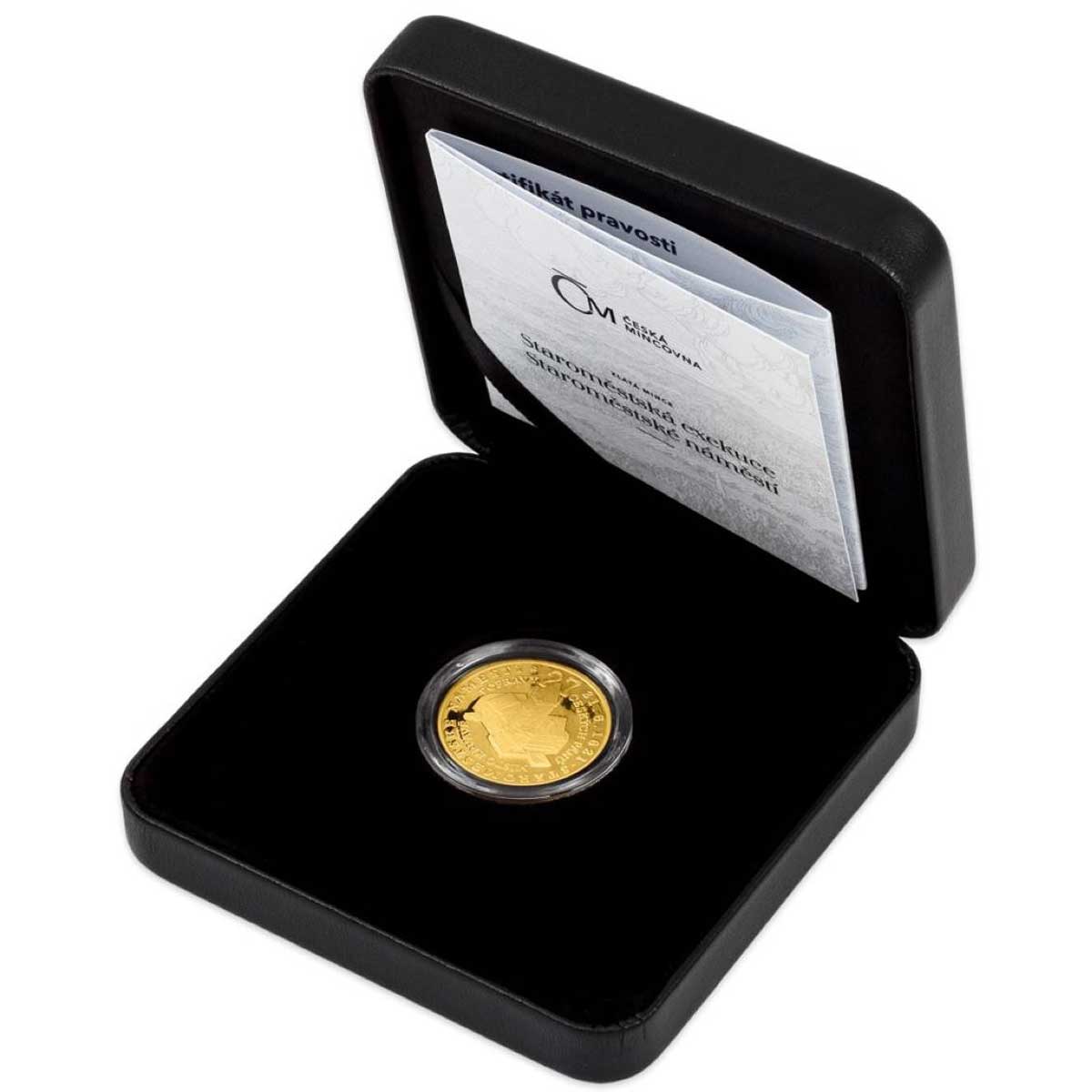
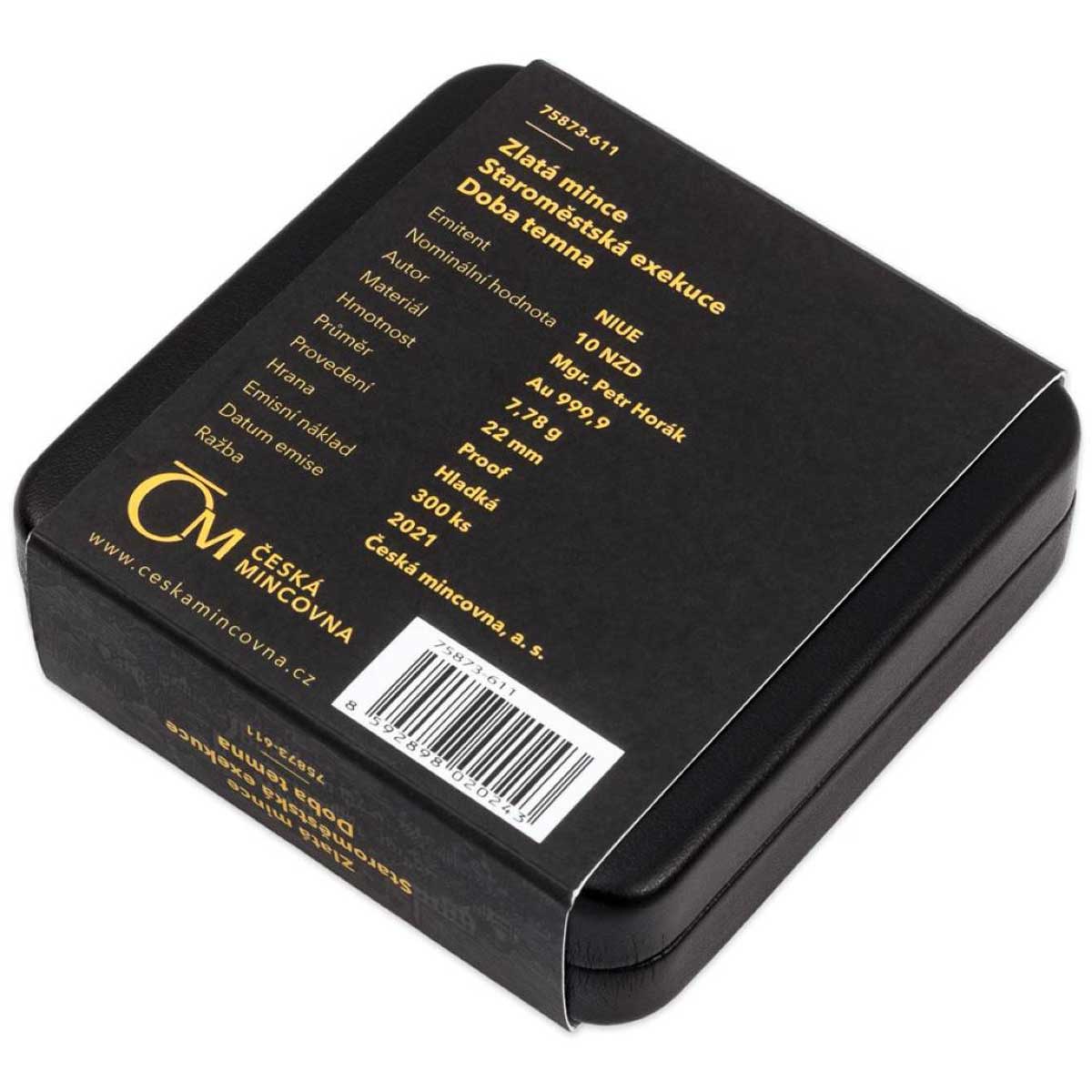
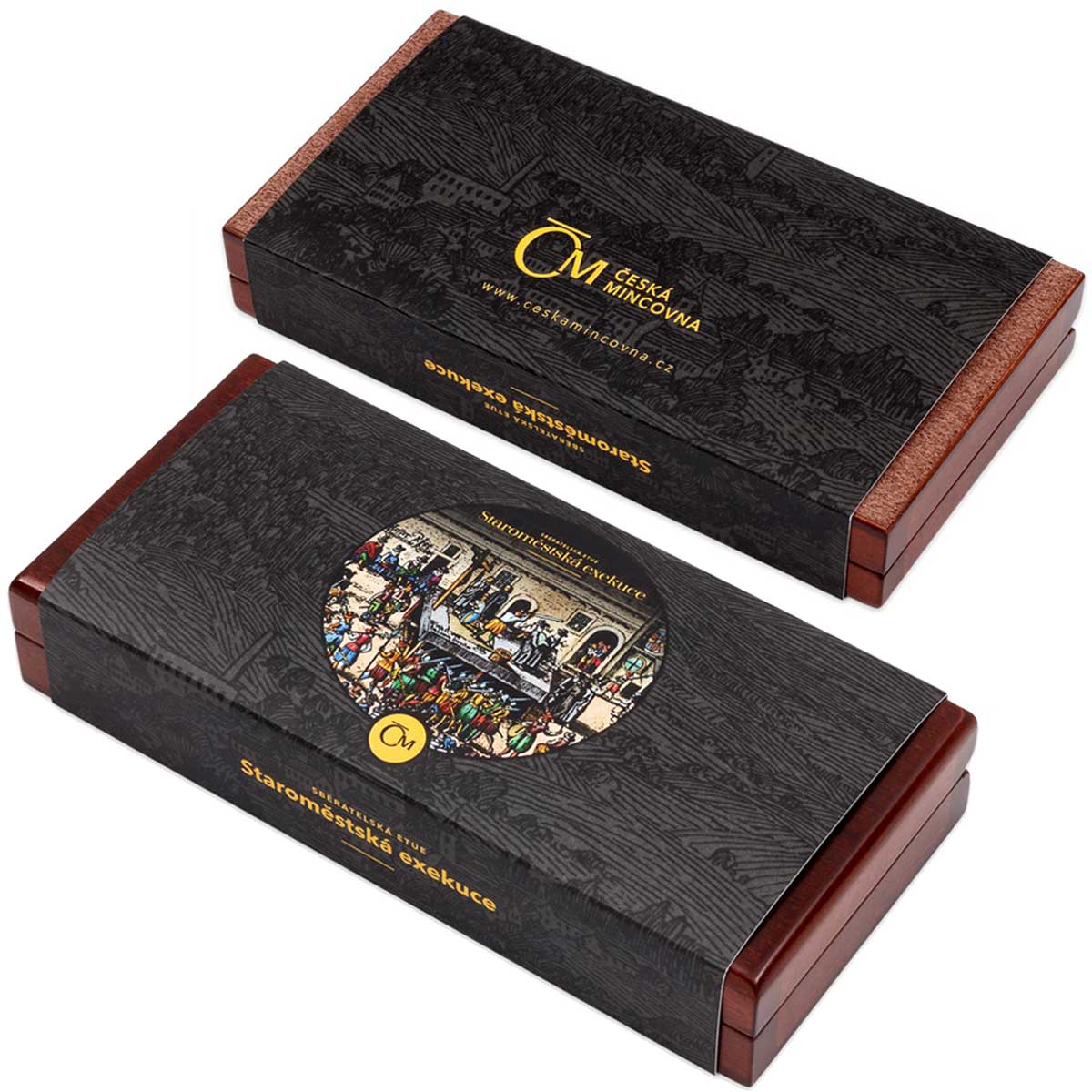
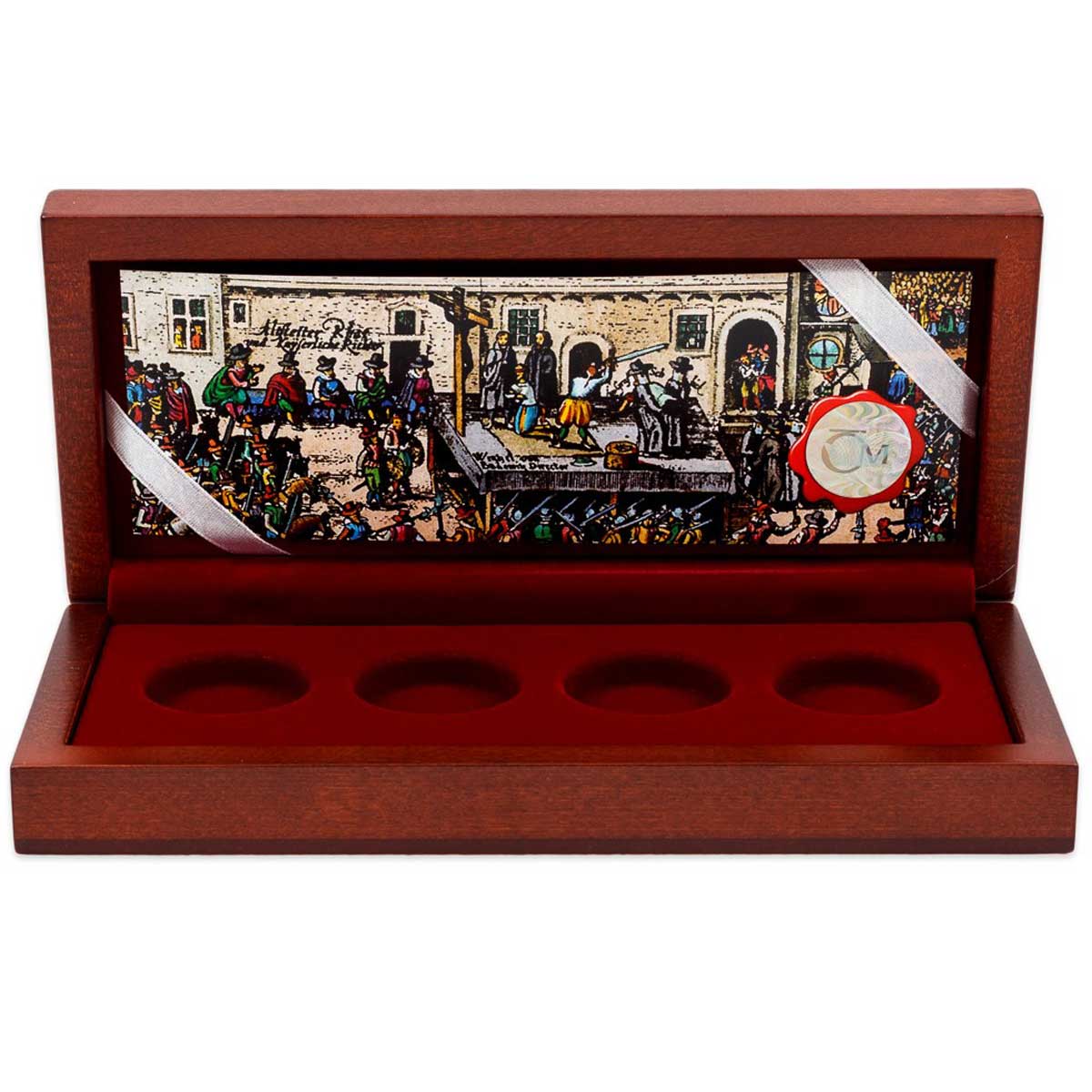
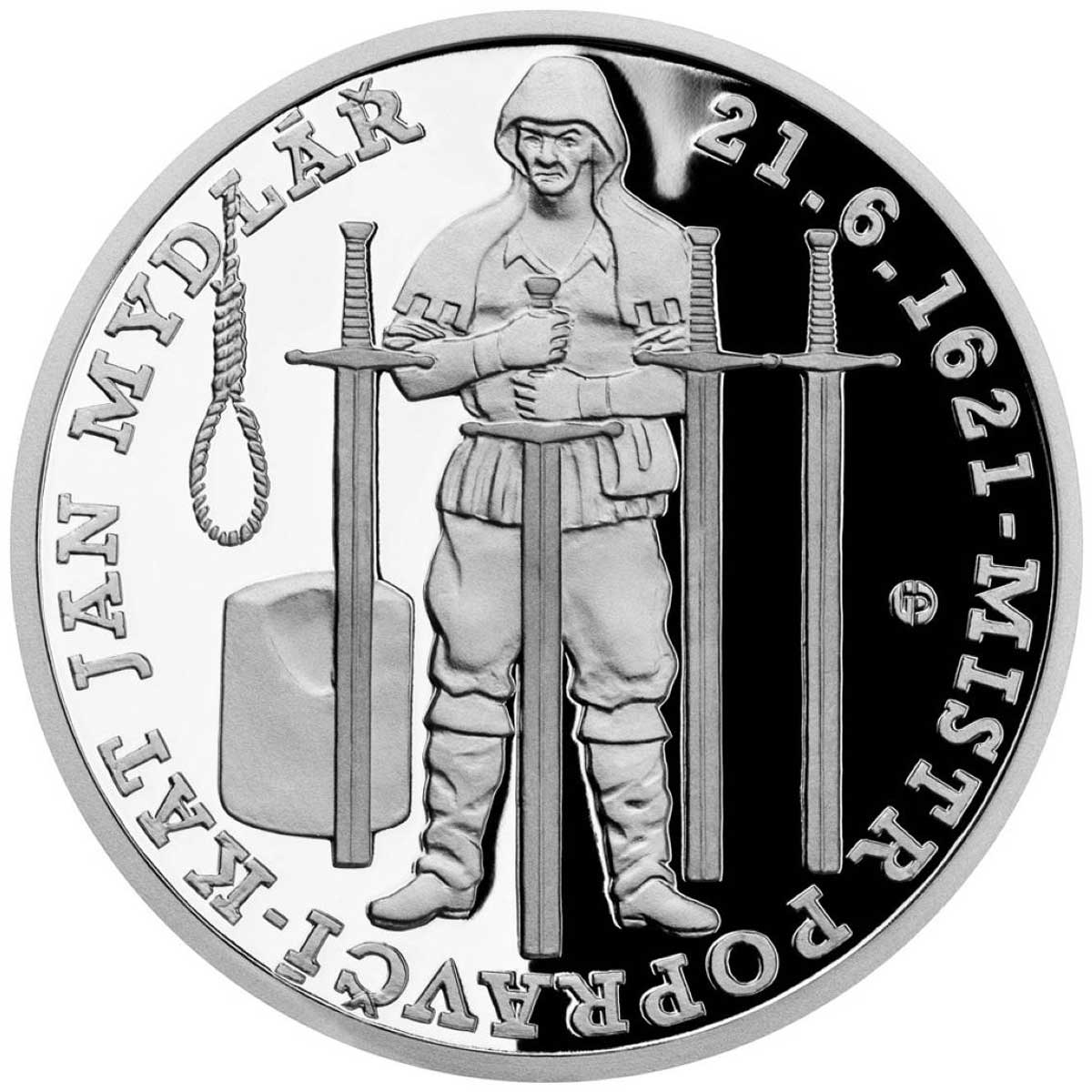
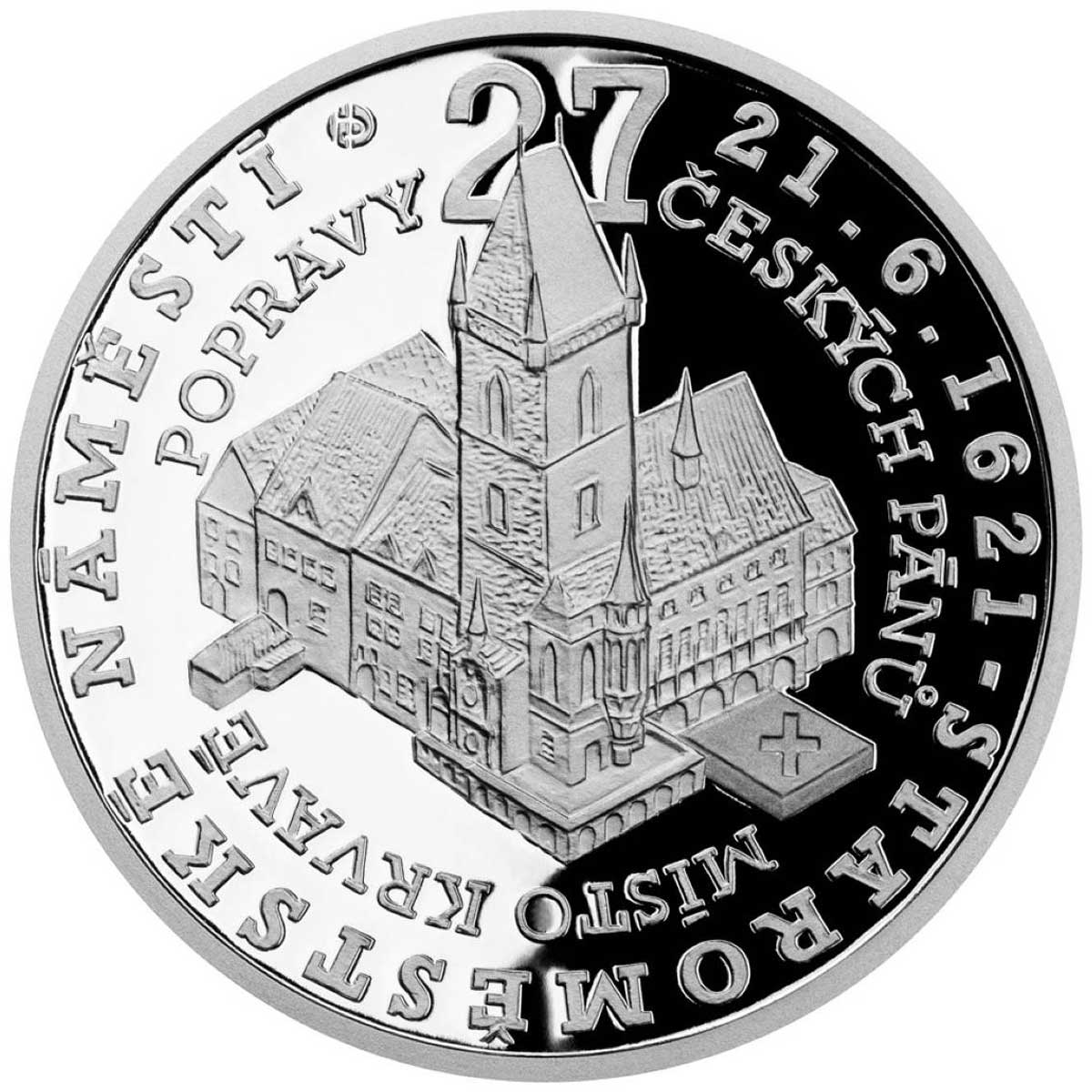
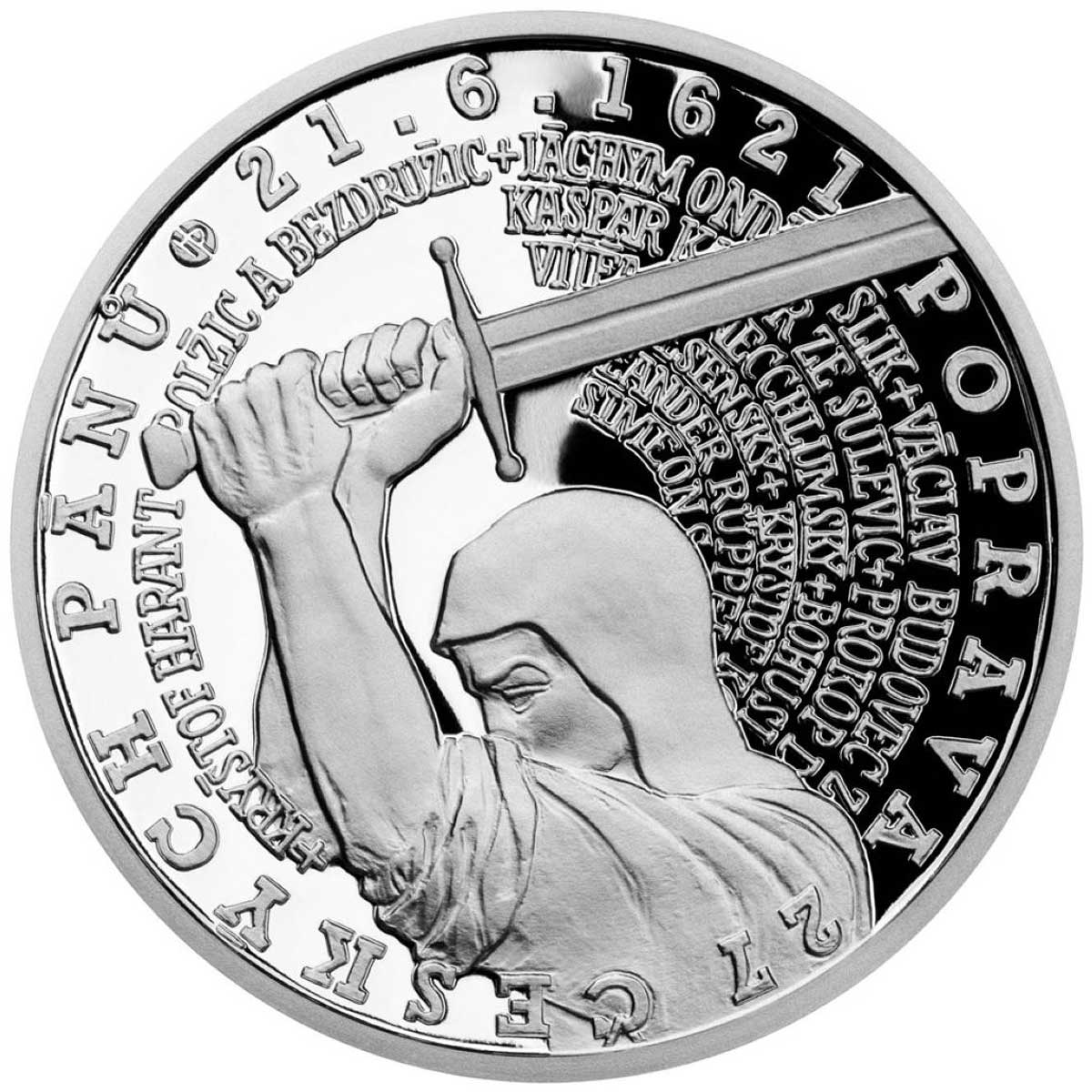
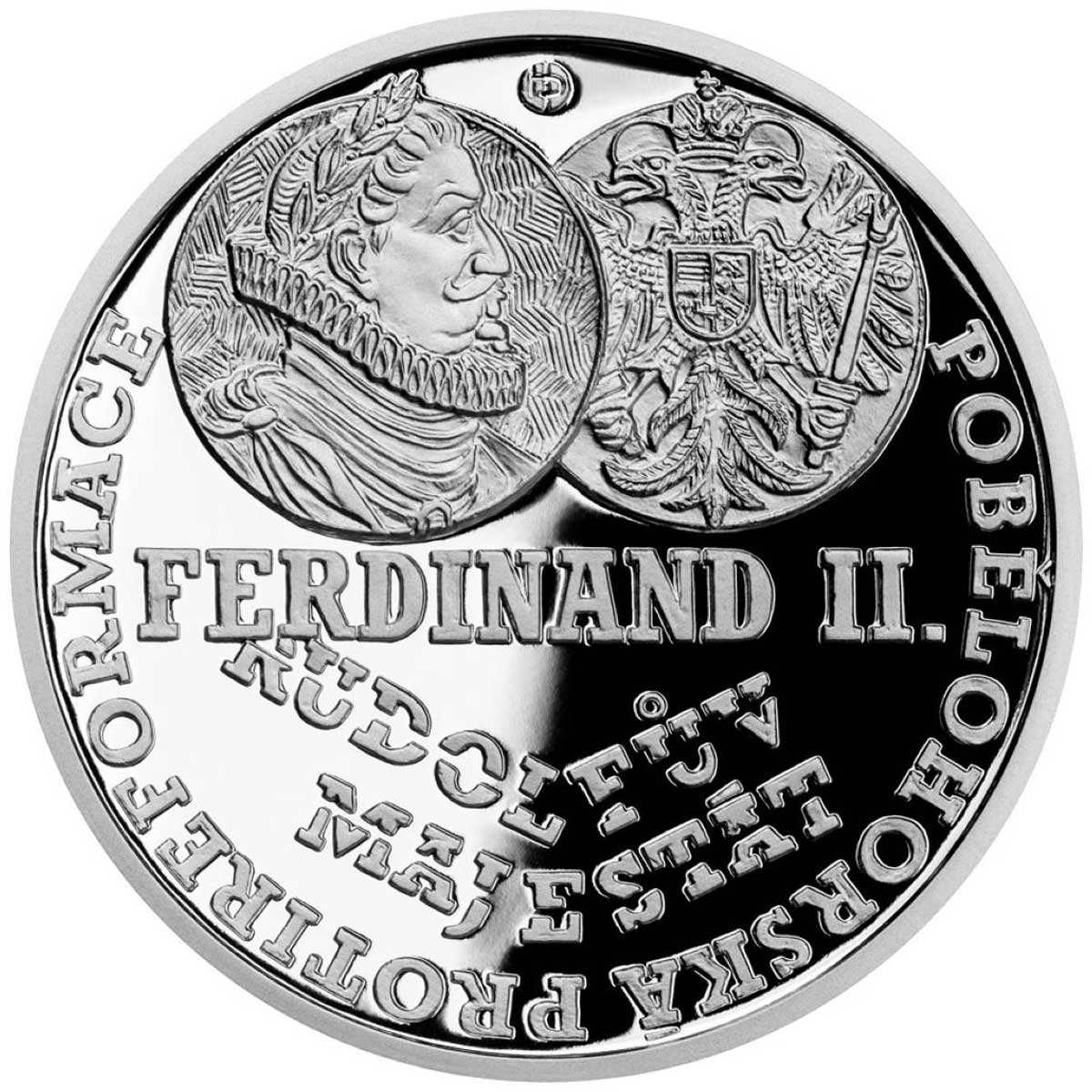


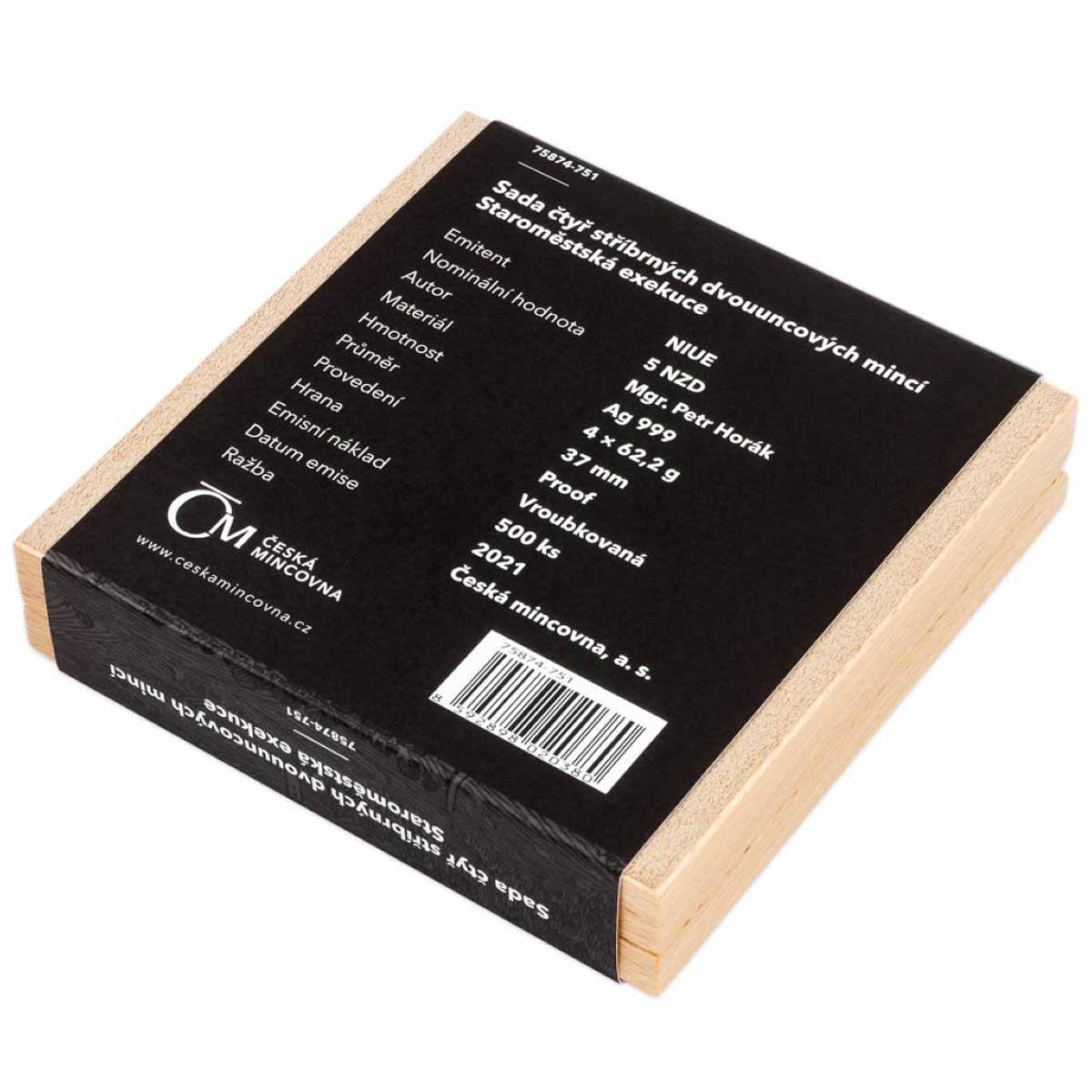
Leave A Comment